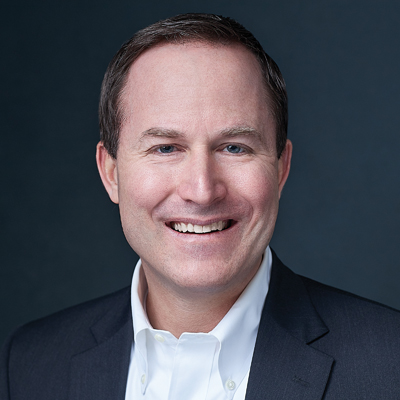Emerging Risks
Praesidium CEO: Risk Management Is Key to Preventing Child Abuse Claims
As claims grow due to changes in statute of limitations laws, insurers are raising underwriting standards and providing their insureds assessment resources to meet those requirements.
The Emerging Risks Special Section is sponsored by Finys. Click on the microphone icon to listen to the Finys podcast.
Insurers are focusing on risk management, while raising rates and lowering limits on child abuse and molestation coverage, said Aaron Lundberg, president and chief executive officer, Praesidium. When it comes to abuse and molestation, new challenges are coming into focus as the new wave of historical allegations continues, he said during an interview with AM Best TV.
Following is an edited transcript of the interview.
What has the role of the insurance industry been in the sector, and how is that changing?
Praesidium is a risk management firm. We have worked with insurance carriers for probably over 15 years to help them work with their insureds to reduce the risk of any kind of abuse or molestation from happening, hence claims occurring.
What we have seen over the years is insurance carriers have really had an evolution in their thinking and how they're looking at this risk. When we first saw insurance carriers looking at this, and getting on their radar, there was a bit of complacency and denial on their part.
They were seeing some big cases, but they were only happening in certain industries. They weren't sure if this was something that they were going to have to be really taking a sustained effort for.
Shortly what we saw after that was they began to look at different resources that they could provide their insureds. They started to work with their insureds to provide them with discounted services like background checks and training. As this risk got broader and more industries were affected, they began to take a very comprehensive approach.
Where we see carriers working now is that they are, on one hand, raising the standards for underwriting and to being insured, but at the same time, they are providing their insureds the resources to meet those standards. We really see carriers being a tremendous influence in our work and the broader work of helping organizations prevent these horrible incidents from happening.

Now, what we’ve seen is that there’s been a move for the states to pass some changes to their statute of limitations that have done two things. One, it has opened up a window of one to two years typically, where regardless of when the abuse happened, survivors can come and disclose that abuse.
Aaron Lundberg
Praesidium
How has COVID impacted reporting of abuse and molestation?
COVID, certainly, has had an effect in regards to how organizations are facing this risk. We, internally, saw a pretty significant decrease in reporting. We run a helpline where organizations report their incidents to us, and we help them manage those, and we saw those numbers dropped pretty significantly. Then, when you look at state reporting, the state, like child protective services and the police, have also seen a decrease in reporting.
This is suspected because, oftentimes, individuals who are the first responders or the reporters are teachers, camp counselors, people who are working front lines with the youth. Since we've seen a pretty dramatic decrease in youth and vulnerable adults being served in these organizations for a period of time, those reports have gone down as well.
Are the statutes of limitation changing, and what effect does that have on insurers?
What we know about this risk is that while the number in terms of how many youth are abused is very, very high. What we also know is that approximately 80% of the abuse does not go reported.
There have been studies that have been done that show that the average age of a survivor to report abuse is 52 years old. There are a lot of barriers for survivors to come out and talk about what had happened to them.
Now, what we've seen is that there's been a move for the states to pass some changes to their statute of limitations that have done two things. One, it has opened up a window of one to two years typically, where regardless of when the abuse happened, survivors can come and disclose that abuse. There either can be criminal charges or civil suits filed.
Then, the second thing that we're seeing states do is raise the age where an individual is able to file a claim. For example, in some states, it was the case where you could file a claim up until the age of 20. Now, they're pushing that back to the age of 30, 35.
What we have seen is when states open these windows, it has resulted in a pretty significant influx in claims made. For example, in New York, they opened a window in August 2019, and a year later, they had close to 4,000 cases filed.
That causes challenges and opportunities for organizations to both reach out to the survivors, but then it causes challenges in regards to how to ensure that we're best protecting the future of our organization.
Is the nature and frequency of insurance claims regarding abuse and molestation changing?
We've seen two significant changes over the years. One is we're seeing more claims. As these windows open, the claims have increased, as we've mentioned.
Then, the types of claims are changing. Historically speaking, the majority of claims were adult-to-child. What we're starting to see now is that there's been an increase in youth-to-youth claims.
As an organization, we help our clients prevent adult-to-youth abuse and child-to-child abuse. When you look at the numbers, frequency-wise, there are more child-to-child cases than there are adult-to-child cases. However, claims have not always represented themselves in that way. Now, we're starting to see those catch up.
Has your scoring system been implemented by insurers or risk managers?
We have an online self-assessment that our clients use to rate their operations against our best practice standards. We work under the philosophy that there are eight different root causes that help manage this risk.
Under each of those eight root causes, there are best practice standards that we've developed over the last 20 years that organizations strive to, and they can become accredited if they meet those best practice standards. What our self-assessment instrument does is it provides them an actual score of how they rate.
What we've seen over the years is, after having thousands of organizations complete it, organizations have worked really hard. They take those scores, and they say, “Well, my first round was 40%. Now, I'm at 60%. Now, I'm out at 80%.”
They're starting to show those and use those for underwriting purposes to show that they are a good risk. Carriers now are starting to ask about those scores and look at those scores to evaluate those prospects as they come in.
Now, the report mentions reduction in limits of liability, caps of availability of coverage, and new or expanded exclusions. How are insurers changing their practices regarding this area of coverage?
Insurers are facing a very challenging time. They are seeing their expectations increase, and so carriers are expecting more. State licensing bodies are expecting more, and parents and guardians and the community are expecting more.
How does changing from occurrence-based forms to claims-made forms affect the sector?
What we've seen is, because these cases have such long tails, it can leave some of the organizations, when they have the historical allegations, with unique challenges.
Sometimes, because of the change in forms, there can be gaps in coverage if these cases have happened a number of years ago, depending how they were written.
Oftentimes, it's even challenging to figure out how they were insured 20, 30, 40 years ago. They're having to really figure out, one, if they're covered, and two, if they are, what type of coverage, what was it, and then what kind of gaps could that present.
Can you talk to us about survivor-forward response and what that is?
When we work with organizations, we help them on two fronts. One, this is a preventable risk. This is not a natural disaster. This is something that not only can we respond to once it happens, that really will reduce the consequences for the survivors, but we can prevent from it even occurring. We work with them on the prevention tools.
However, these cases do happen. What we have found through research is that how an organization responds, once it occurs, will either reduce the consequences first and foremost to the survivors, but also to the organization and the community, or increase the consequences to the survivors, the organization, or the community.



























